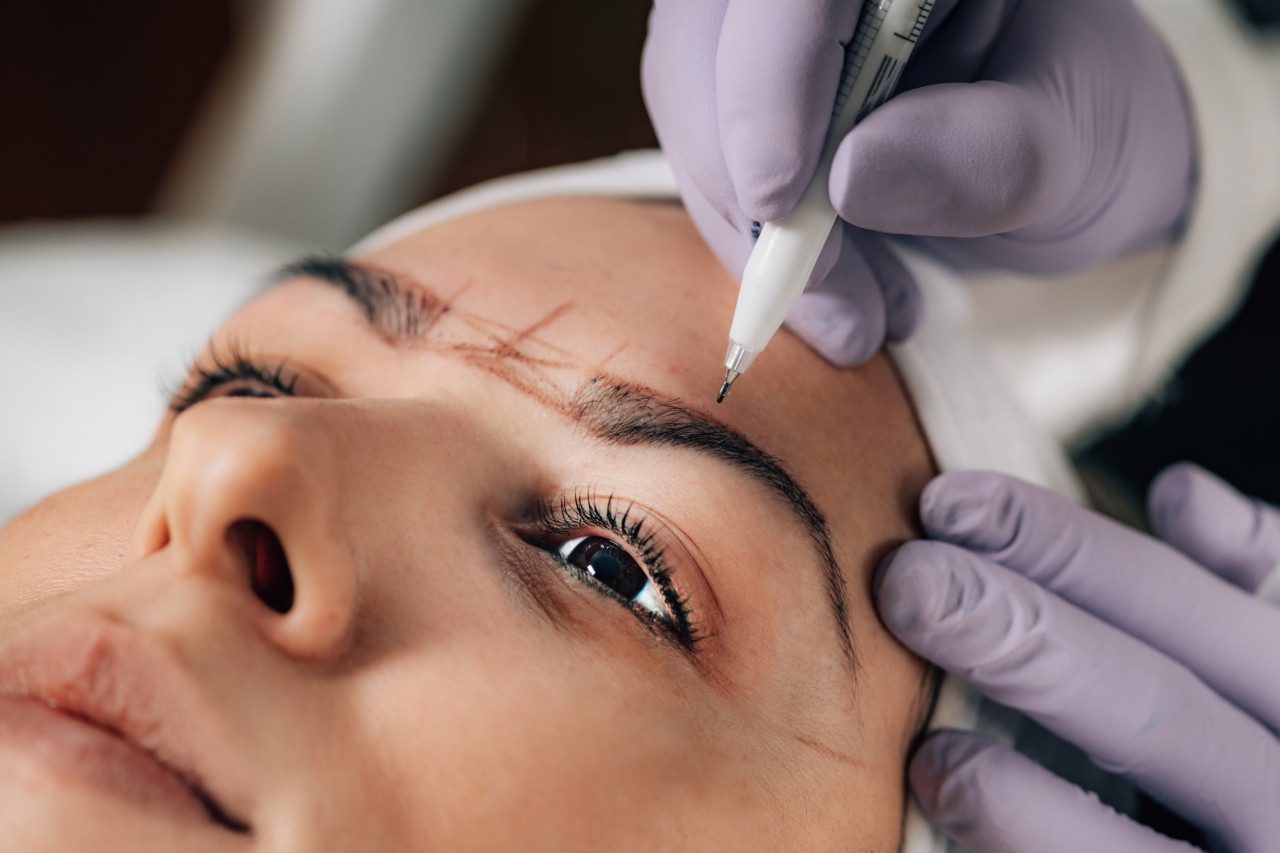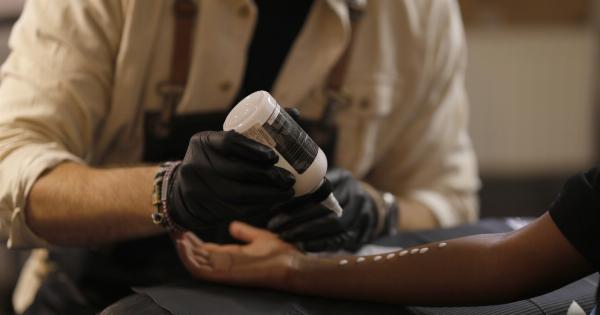Tattoos have been a form of self-expression for centuries, serving as symbols of cultural significance, personal beliefs, or artistic creativity. However, it is not uncommon for people to change their minds about a tattoo after some time.
This can be due to a change in personal preference, a shift in values, or the desire to remove an old, faded, or poorly executed tattoo.
Fortunately, tattoo removal techniques have advanced significantly over the years, providing individuals with more options to erase unwanted ink from their bodies.
From laser treatments to surgical excision, these methods have proven to be effective in diminishing the appearance of tattoos. However, a common concern for those seeking tattoo removal is whether the procedure will leave permanent marks behind. In this article, we will explore this question to provide you with a better understanding of what to expect from tattoo removal.
The Tattoo Removal Process
Before delving into the potential permanent effects of tattoo removal, it is important to understand the actual process. Tattoo removal typically involves breaking down the ink particles implanted in the skin during the tattooing process.
Laser tattoo removal is the most popular and widely used method today. It involves using laser technology to emit high-intensity light pulses that penetrate the skin’s surface, targeting the tattoo ink specifically.
The laser’s energy is absorbed by the ink particles, causing them to fragment into smaller pieces. Over time, the body’s immune system naturally eliminates these fragmented ink particles, leading to a lightening and eventual fading of the tattoo.
Surgical excision is another tattoo removal option, particularly suitable for smaller tattoos. This technique involves cutting out the tattooed skin and stitching the surrounding skin back together.
However, surgical excision often results in a scar, making it less favorable than laser removal.
Factors Affecting Tattoo Removal Results
The tattoo removal process is highly dependent on several factors that can influence the final outcome:.
Type and Color of Ink
Generally, tattoos using darker ink colors, such as black or deep blue, are easier to remove compared to lighter colors like yellow or pastels.
This is because darker colors absorb the laser energy better, allowing for more effective fragmentation of the ink particles. However, recent advancements in laser technology, such as the use of different wavelengths, have made it possible to remove a wider range of colors.
Tattoo Size and Complexity
The size of the tattoo and its complexity play a role in determining the success of removal. Larger tattoos require more sessions and extended recovery time.
Moreover, tattoos with intricate designs or shading may be harder to remove entirely, potentially leaving behind some traces of ink.
Skin Color and Type
The color of your skin can affect the outcome of tattoo removal. Individuals with lighter skin tones usually have better results than those with darker skin.
This is because laser energy can be absorbed by the tattoo ink more effectively in light skin, minimizing the risk of hypo- or hyperpigmentation. Moreover, certain skin types, such as dry or scarred skin, may also impact the effectiveness of tattoo removal.
Professional Expertise
The skill and experience of the tattoo removal specialist play a critical role in determining the success of the procedure.
A knowledgeable professional will assess your tattoo, discuss your expectations, and develop a tailored treatment plan to achieve the best possible outcome. Choosing a reputable specialist greatly reduces the risk of unwanted permanent marks.
Temporary Side Effects
While tattoo removal aims to eliminate the tattoo without leaving behind noticeable marks, it is important to note that temporary side effects are common during the healing process.
Immediately after the treatment, the treated area may appear red, swollen, or blistered. Some individuals may also experience temporary hyperpigmentation or hypopigmentation, where the affected area becomes darker or lighter than the surrounding skin. These side effects typically resolve on their own within a few weeks.
Potential for Permanent Marks
Now, let’s address the question at hand: will tattoo removal leave permanent marks? In most cases, the goal of tattoo removal is to achieve a satisfactory outcome without leaving any visible marks.
With advancements in laser technology and expert techniques, the chances of permanent marks are significantly minimized.
However, it is essential to acknowledge that each individual’s response to tattoo removal can vary. Factors such as your skin type, tattoo size, ink color, and the extent of fading can all influence the final result.
Despite the high success rate, some individuals may experience residual pigment, slight scarring, or textural changes in the treated area.
Residual pigment refers to a faint shadow of the tattoo that remains even after multiple sessions of laser treatment.
This typically occurs when the ink particles are deeply embedded in the skin, making them more challenging to target and break down completely. While these remnants may not be as visible as the original tattoo, they can still be present to some degree.
Scar formation is another potential issue that can arise during the tattoo removal process. Although laser removal is generally considered less invasive than surgical excision, it can still cause scarring in rare cases.
Factors such as improper aftercare, individual healing processes, or pre-existing skin conditions can contribute to the development of scars. However, the risk of scarring is significantly lower with laser removal compared to surgical methods.
Minimizing Permanent Marks
While there is a small possibility of permanent marks following tattoo removal, several precautions can be taken to minimize this risk:.
Choose a Qualified Professional
When opting for tattoo removal, it is crucial to select a qualified professional with extensive experience in the field.
A skilled specialist will employ appropriate techniques, assess your unique situation, and provide personalized advice to minimize the chances of permanent marks or complications. Researching and reading reviews can help you find reputable professionals in your area.
Follow Aftercare Instructions
The success of tattoo removal relies heavily on proper aftercare. Following the specialist’s instructions and caring for the treated area can make a significant difference in the healing process.
This may involve regularly applying ointments or creams, avoiding sun exposure, and refraining from scratching or picking at scabs.
Consider Multiple Treatment Sessions
Tattoo removal is rarely achieved in a single session. Most individuals require multiple treatments to achieve the desired outcome.
Ensuring that you complete all recommended sessions maximizes the chances of thorough ink elimination, minimizing the likelihood of residual pigment.
Be Realistic in Your Expectations
While tattoo removal technologies have undoubtedly improved, it is important to have realistic expectations. Complete removal of a tattoo is not always possible, particularly with older, larger, or more complex tattoos.
Consulting with a specialist before starting the removal process can help set realistic goals and avoid potential disappointment.
Conclusion
Tattoo removal has become increasingly advanced, offering individuals a chance to erase unwanted ink.
While the goal is to achieve a tattoo-free appearance without leaving any permanent marks, the success of tattoo removal can vary depending on several factors. Residual pigment and scarring are potential outcomes, albeit rare, and can be influenced by ink color, skin type, treatment technique, and individual healing processes.
It is crucial to consult with a reputable specialist and follow proper aftercare instructions to minimize the risk of permanent marks.
By understanding the factors at play and having realistic expectations, you can approach tattoo removal with confidence and increase the likelihood of a successful outcome.



























